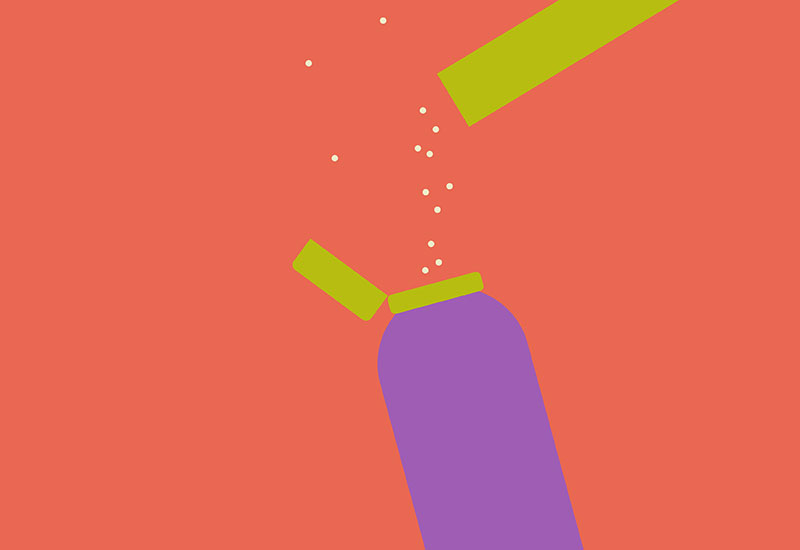How Essential is Salt for Optimal Health?

The following article was written by Heinen’s Chief Dietitian, Melanie Jatsek RD, LD.
Do you ever wonder why tears are salty? How about sweat? Touch your tongue to your arm after a vigorous workout and there’s no question about it—sweat is salty!
Humans Naturally Need Salt
Salt is made up of the two essential minerals sodium and chloride. Essential means we must rely on sources outside of our body to stay in balance. Salt has been unfortunately demonized over the years, but the truth is, you can’t live without it. On the other hand, you could go the rest of your life without eating a single gram of sugar and your health wouldn’t suffer one bit. In fact, it would likely improve!
In relation to salt, our body fluids mimic that of the ocean. About 90% of the ocean’s mineral content is sodium chloride, the same percentage of mineral content found in our blood. So yes, humans do indeed need salt to survive.
The Role of Salt in Health
Salt plays an essential role in these critical bodily functions:
- Helps maintain the optimal amount of blood in your body
- Required by your heart to pump blood throughout your body
- Helps with digestion
- Assists in cellular communication
- Aids in bone formation and strength
- Important for reproduction
- Prevents dehydration
- Essential for proper functioning of cells and muscles
- Needed for transmission of nerve impulses to and from organs, such as your heart and brain
- As an electrolyte, it helps carry out electrical impulses that control many bodily functions
In an ideal world, an Fx—food as medicine—eating style would be the norm and adding a dash or two of salt to season your broccoli would be perfectly acceptable. But in case you haven’t noticed, processed foods are a staple in the American diet; therefore, getting enough salt is not a problem. The issue lies in the overconsumption of the refined carbohydrates, added sugars and inflammatory seed oils so abundant in these convenience foods. That is what drives disease.
Conditions that Can Deplete Sodium
Certain dietary practices, conditions and disease states can cause salt depletion in the body. These include:
- Intense exercise
- Hot weather
- Illness with accompanying fever, vomiting and/or diarrhea
- Caffeinated beverages
- Low carbohydrate diets
- Intermittent and prolonged fasting
- Commonly prescribed medications
- Thyroid disease
- Digestive issues, like ulcerative colitis and Crohn’s disease
Sources of Sodium
Small amounts of sodium (less than 100 mg per serving) are found naturally in whole foods like fruits, vegetables, unsalted nuts and seeds and fresh meat and seafood. But as you know, sodium is also found in abundance in processed foods, along with undesirable ingredients like refined sugars and industrial seed oils (i.e., corn oil, sunflower oil, etc.). Examples of these foods that you should try to minimize are:
- Frozen meals
- Canned products
- Deli meats
- Cheese
- Cereal
- Packaged convenience food (chips, pretzels, crackers)
- Bread
- Sauces
- Condiments
How Much Salt Do You Need?
The American Heart Association recommends we aim for no more than 2,300 mg of sodium per day. This is a good place to start; however, you also want to take into consideration any conditions you may be facing that deplete sodium, like intense exercise in hot weather.
That being said, it’s really important for you to listen to your body. Just like thirst is your body’s way of getting you to drink more water, craving salt after a sweaty workout is its way of telling you it needs salt.
As I stated above, a whole food-based diet is the best way to achieve optimal health, and because it’s naturally low in sodium, you don’t have to feel bad about using a little salt during cooking. Your best salt options at Heinen’s are:
- Redmond Real Salt is an unrefined sea salt mined from an ancient seabed in Utah that contains 60+ trace minerals.
- Celtic Grey Sea Salt gets its light grey hue from the pure clay lining of the salt beds where it is harvested. This unrefined sea salt is harvested to preserve its vast array of vital trace minerals.
- HimalaSalt Pink Sea Salt is hand-harvested from a protected source deep within the remote Himalayas and remains free of impurities.
Key Takeaway
Our ancient ancestors were hunter-gatherers and ate from the earth. As a result, they were able to brilliantly meet their body’s sodium demands. This points to the evolutionary truth that when you eat a whole food-based diet and listen to your body, it will never steer you wrong.
Please check with your healthcare provider before making any adjustments to your general healthcare routine.


